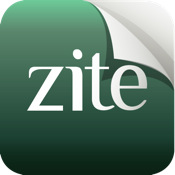CNN’s purchase of Zite this week underscores the importance of news publishers investing in the platforms that people use to discover content on tablet devices.
The two exist in different parts of the digital news ecosystem: Publishers such as CNN that create content, and platforms such as Zite that help consumers find that content.
Publishers have learned over the past decade that platforms have the advantage in this game, as companies like Google and Facebook have increasingly become the way that people find content on the desktop Web.
The lesson is that platforms grow much larger than any individual content provider, dominating the consumer relationship and with it the advertising market. News websites are being pushed aside, trying to get people from Google and Facebook to come their way as their content is spread across the Web by aggregators.
On tablets (and to some extent other app-driven mobile devices), however, the ground is less settled. And news organizations are trying to get their own piece of the platform business as startup apps like Zite, Flipboard and Pulse gain momentum.
News organizations are taking three different approaches to this: acquisitions, startups and partnerships. Each tactic has its drawbacks. Buying a successful app like Zite is expensive; launching your own is complex and risky; simply partnering with an existing platform doesn’t bring any ownership or control over it.
CNN’s solution was to acquire Zite, an iPad app that learns over time which sources and topics each user likes and curates the latest relevant content from the Web into a magazine-like browsing experience.
“Zite is a sort of modern newsstand,” CNN Digital Senior Vice President K.C. Estenson told me. It’s the place where you come first to browse the news that might interest you, after which you continue to the specific publications that caught your eye.
“That notion of discovery … applies in the tablet and mobile marketplace as well, and so we saw in Zite an opportunity to be in the middle of all of that,” Estenson said.
CNN chose to acquire Zite because it was the best technology in its class and had an excellent team of employees behind it. And CNN couldn’t build something like it in a short period of time, Estenson said.
Other major publishers are working on their own platforms. So far, these publisher-backed startups have had limited success.
The Washington Post launched a free, personalized news service for tablets and the Web called Trove. The New York Times helped develop News.me, which costs about $1 a week to use. And the Times, Post and Gannett all invested in a service called Ongo, which offers content from select mainstream media at a hefty price tag of about $7 a month.
None of those iPad apps ranks among the top 370 most popular news apps in iTunes or the top 200 free news apps. Meanwhile, Zite has jumped to the No. 1 iPad news app (publicity from the announcement seems to have helped it move from 20th or so). Flipboard is third.
AOL’s new Editions iPad app, less than a month old, is ranked seventh in iTunes. Similar to Zite, it learns the topics and sources you like and brings you a personalized news magazine curated from thousands of publications. Unlike Zite, it includes a section for local news and it only comes out once a day instead of updating on demand.
Other publishers such as Conde Nast, meanwhile, are trying to get into the platform space by partnering with the leading app, Flipboard. In its Flipboard Pages program, major publishers allow Flipboard to embed their content within the app rather than linking out to their websites; the publishers sell advertising in the app.
Owning a platform also requires restraint by the news organization so that it doesn’t try to tilt the platform in favor of its own content. If Zite’s algorithm determines that a Washington Post story is more relevant to a user than a similar CNN story, CNN will have to live with that. AOL made the same commitment not to favor its own content in the Editions app. To keep credibility, platforms must provide unbiased results optimized only for the user’s needs.
Despite the challenges, major news organizations are grabbing footholds in the tablet platform market because they’ve learned their lesson. Platforms inevitably dominate over any individual provider as a technology matures.
Martin Niesenholtz, The New York Times senior vice president for digital operations, described this in a speech to the Newspaper Association of America in March. He noted the Times is one of the most linked-to sources on the Web. That’s nice, but it’s not as nice as being the thing that gives out the links.
In the end, Niesenholtz said, “platforms win.”








Comments